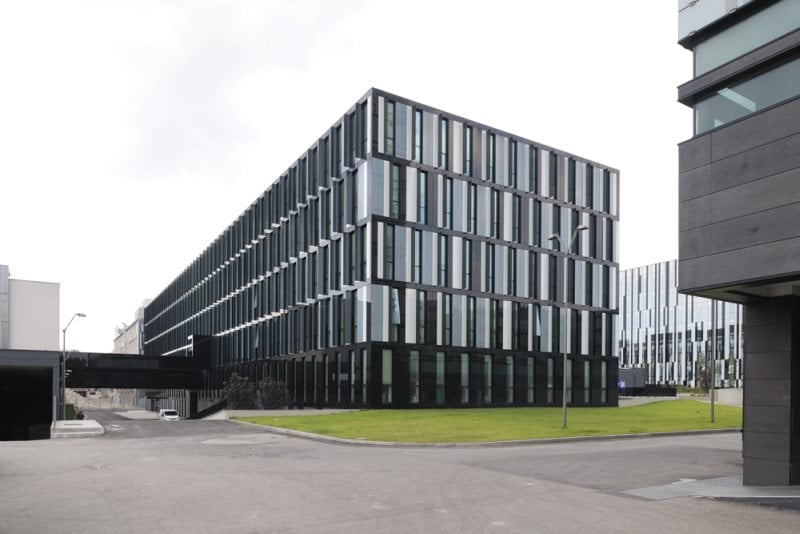
The master plan, since its inception in 2001 when Boeri Studio (composed of Stefano Boeri, Gianandrea Barreca and Giovanni La Varra) won the design competition by invitation, has aimed to upgrade and expand the areas occupied by the older offices and printing works of the RCS company (located on via Rizzoli, northeast of Milan, near the River Lambro). Together with Stefano Boeri, the architects designed Building C, a low complex with an 18 storey tower and a central courtyard that culminates on the river’s edge. In 2007, when the staff of RCS moved back into the new building, work on the next two projects began, including B5, which bears the signature style of the architects Gianandrea Barreca and Giovanni La Varra, who founded their studio Barreca & La Varra in 2008.
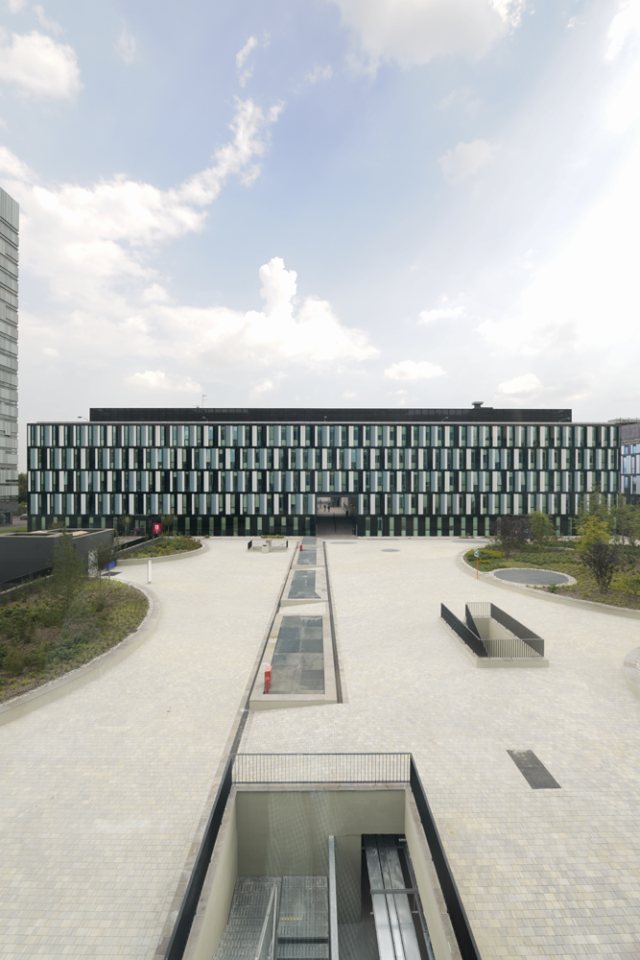
B5 is a building of original character in respect to the other works on the site. While it actively participates in the program, it was intended to explore certain areas that were of particular importance to the architects. Gianandrea Barreca stated that they “were interested in the unity and continuity of matter. Thus, once the first building on the site was designed with a glass matrix façade, it seemed natural to continue to pursue an objective of material homogeneity”. The new intervention by Barreca & La Varra means to house a series of programs, from the editorial offices of the RCS newspaper group, to photography studios and spaces for the multimedia sector. The building is the result of a high level of professionalism applied throughout every stage of development in the project.
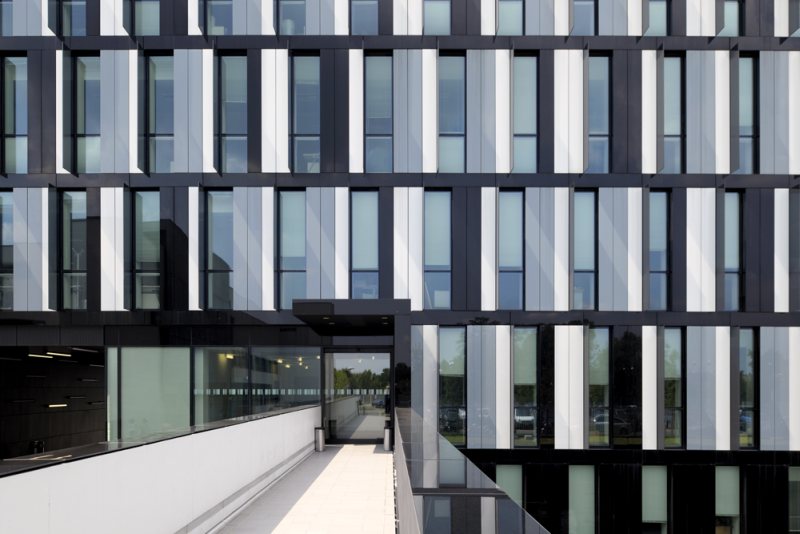
Designed as a “classe A” (the equivalent of a LEED platinum) certified structure, B5 is a parallelepiped volume, with a five story glass façade that wraps around the building, reminiscent of the image of a barcode. The façades are one of the main design elements and work as a device that allows the building to engage with the surrounding urban spaces that form the boundary of the site, as well as to promote greater flexibility and spatial quality to the interior workplace.
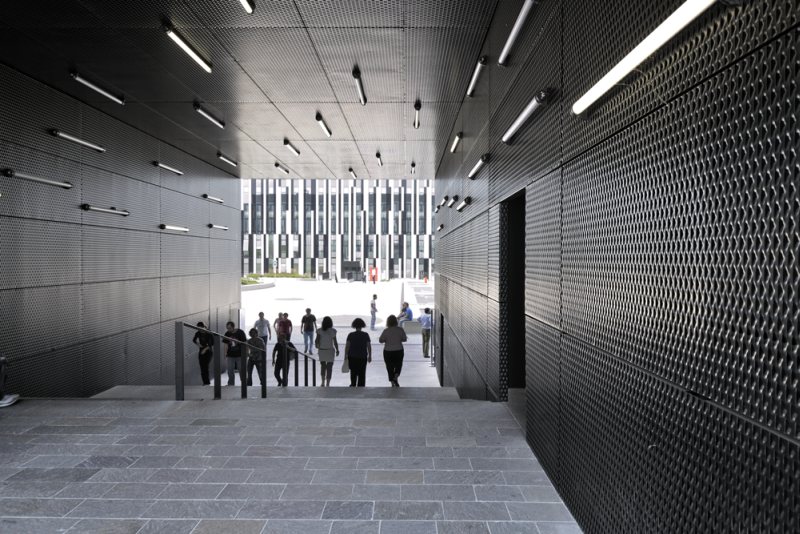
The façade is composed of vertical alternating shades of white, gray and black (with the exception of the ground floor where black is the dominant color). The color “texture” of each floor is staggered in respect to the adjacent floors of the buildings. The verticality of the project is enhanced by the black string-course elements. Giovanni La Varra explains that “the decision to work on the boundary elements was due to the fact that, in a marginal context such as it exists at this site, it was important to establish a new front that would engage the street. They had to establish a new territorial as well as urban identity”. The facade of B5 attempts to pursue an ideal of composed space and scale.
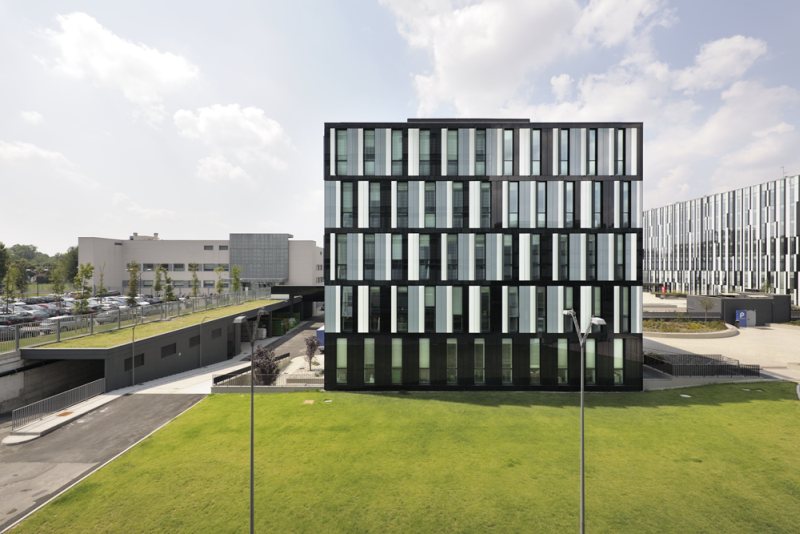
Each of the glass panels of the surface, which sometimes appear transparent and at other times opaque depending on the light, dress the façade and consolidate the dimensions and forms with precision and grace. The building is easily understood by the observer. The rhythm and cadence inherent in the structure of the façade defines the space, designing and arranging the areas within which individuals interact. Windows are placed between the opaque glass elements, and a shading system, perpendicular to the façade, was incorporated thus endowing it with a sort of dynamism.
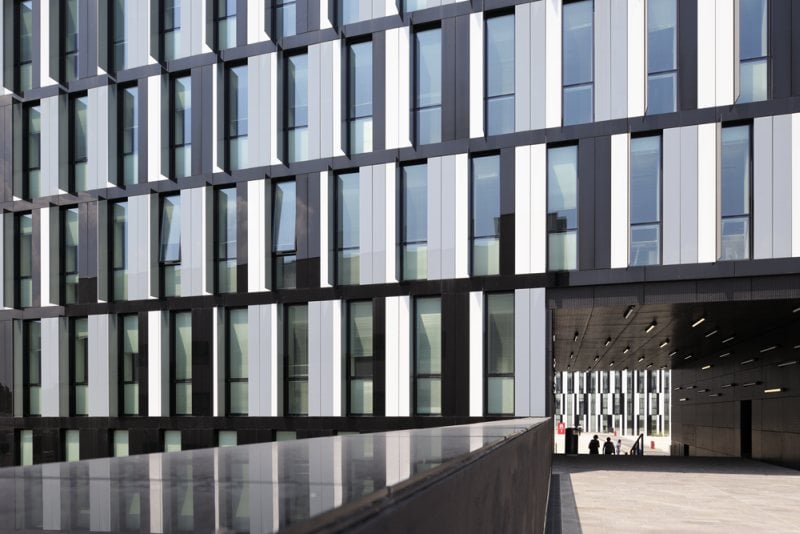
Gianandrea Barreca states that “The entire building, including the ground floor facing the inner court, is covered with serigraphed and colorful glass panels and vertical screens in the shape of ‘fins’ that emerge from the edges of the façade. The search for a balance between these and other architectural elements, like the black string-course, create for an ever-changing and dynamic façade”. The façade then becomes a sort of assembly kit, a structure that indicates the functions, and perhaps more interestingly, generates the perception of the building as a sculpture in the landscape”. The operable windows are also the mediators between B5 and the rest of the RCS project.
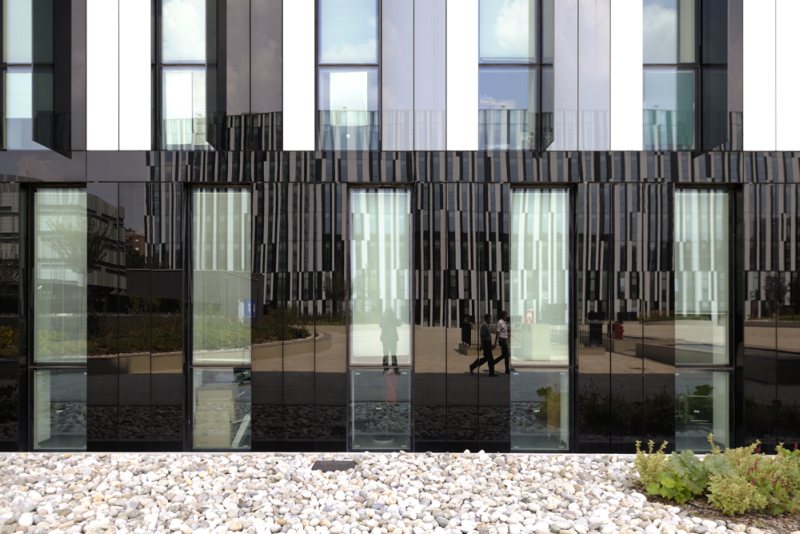
The surrounding cityscape and context are in fact reflected from the glass as if the building were able to “read” the site, tracing on its surface the history, ideas and stories that give the place its current shape. The dialogue between the architecture and the landscape, in this particular case between the façade and the city, is an idea that Barreca & La Varra have always been particularly mindful of since the inception of their firm. “The attempt is to define the façade in a greater sense than is usually required, creating a surface that is much more responsive to its surroundings” state Gianandrea Barreca and Giovanni La Varra. The ability to design the compound of the RCS as a creative hub that interacts directly with the public spaces of the area was a major goal of the architects, who wanted to create a “village for intellectual work”.
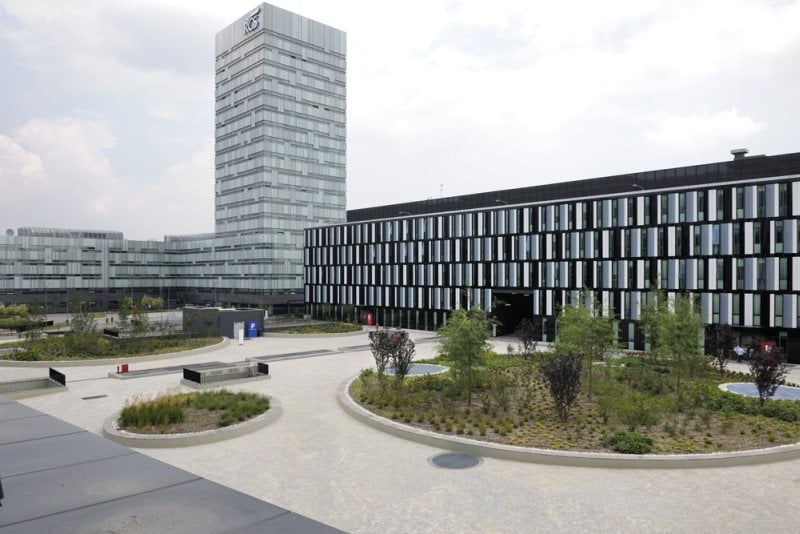
The restructuring of the RCS compound, in Barreca & La Varra’s project, is essential to the preservation of the history of this part of the city and serves as a catalyst for future development. From the beginning of the 20th century Milan has developed vast industrial areas which are set apart from the rest of the city. These areas grow larger every year and are thus always located in the periphery. Isolated developments are scattered through the countryside with little or no contact between the city and themselves. These areas nowadays often experience hardship, neglect and more often than not, fall into ruin. The new design of the RCS is designed as if it were a cultural and social hub that responds to contemporary issues and needs. The recovery of the area consists of expanding the compound; thus attempting a social construct that is explicit of the ideals of Barreca & La Varra and a competent vehicle for interaction between the publishing group and the Milanese community that is witness to the evolution and the growth of one of the most important business groups in the city.
The construction of B5 has offered a starting point to analyze and comment a few of the issues raised by the project. The book Barreca & La Varra. Questioni di facciata, edited by Moreno Gentili, was published by Skira in February 2012 in both English and Italian.
Project Details:
Location: Milan, Italy
Type: Offices
Architects: Barreca & La Varra – www.barrecaelavarra.it
Client: Iniziativa Immobiliare Due s.r.l. (Prelios S.p.A. – Morgan Stanley – RCS Mediagroup)
Gross Floor Surface: 9.549 mq
Floor Area: 2.340 mq
Schedule:
design: 2007-2008
construction: 2008-2011


